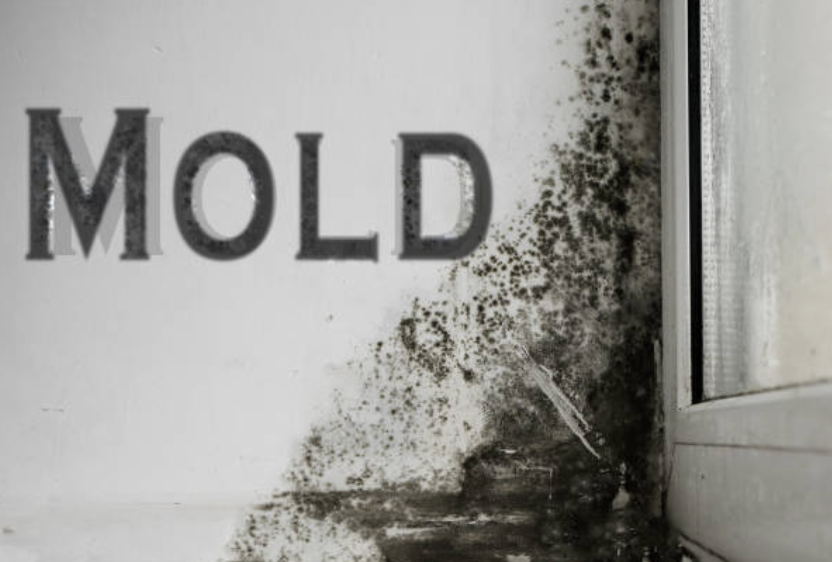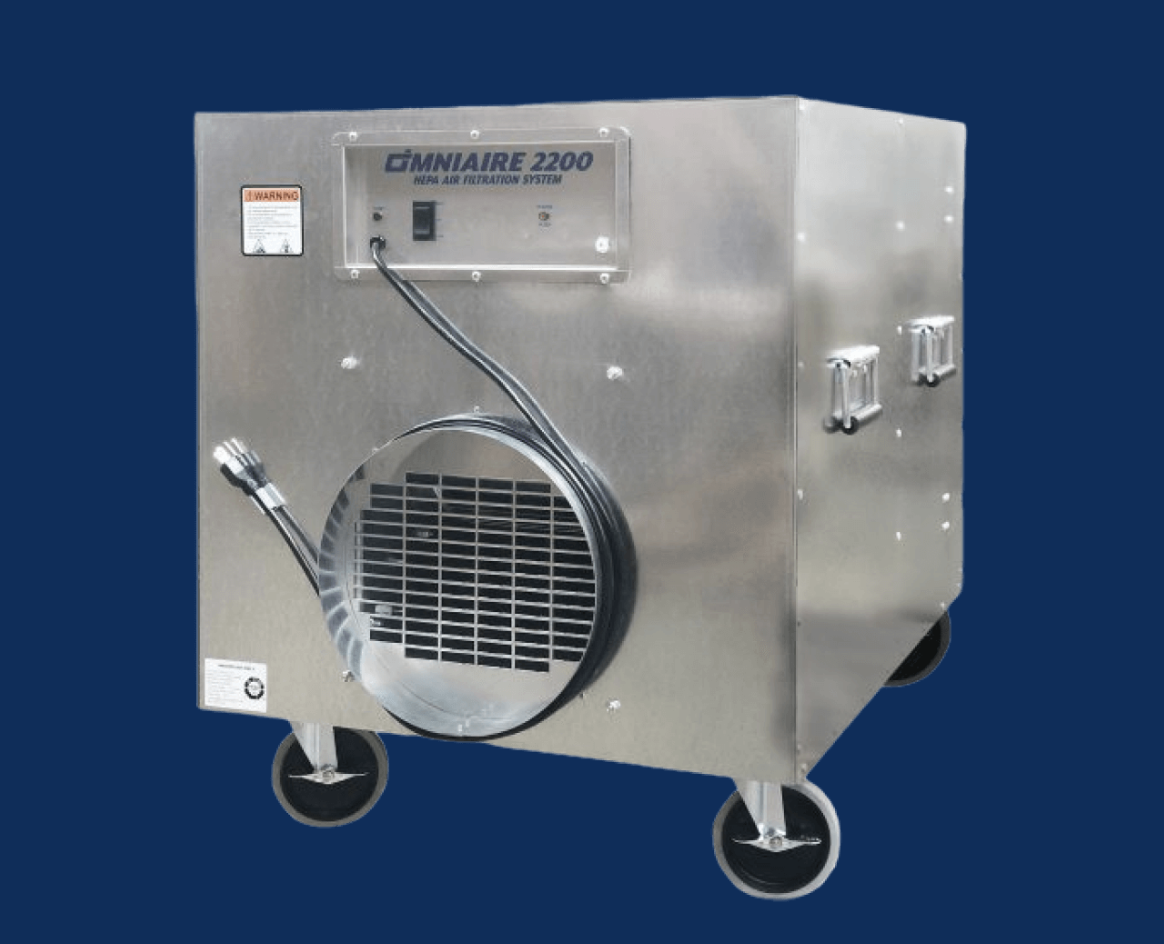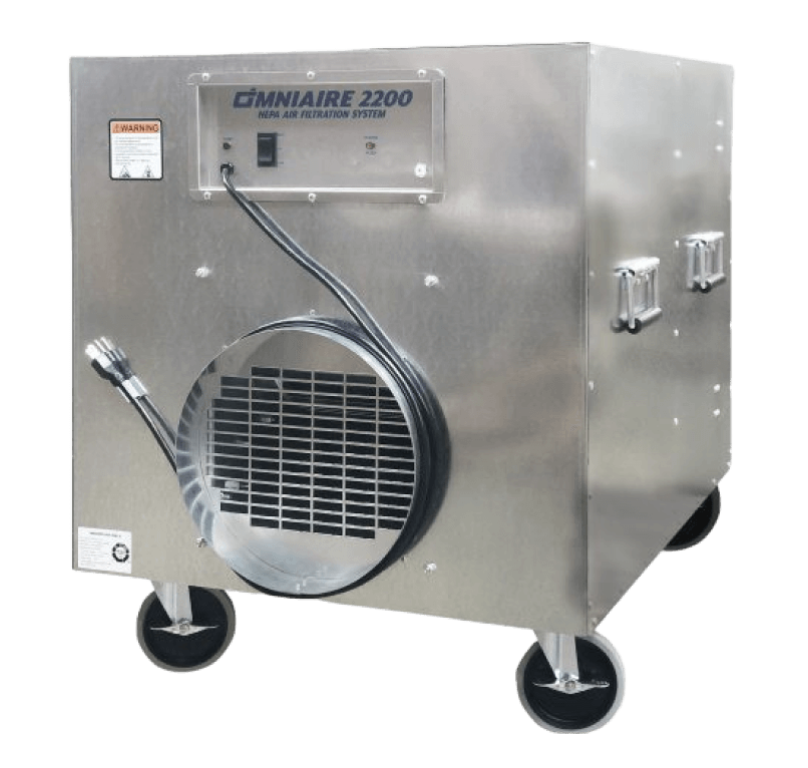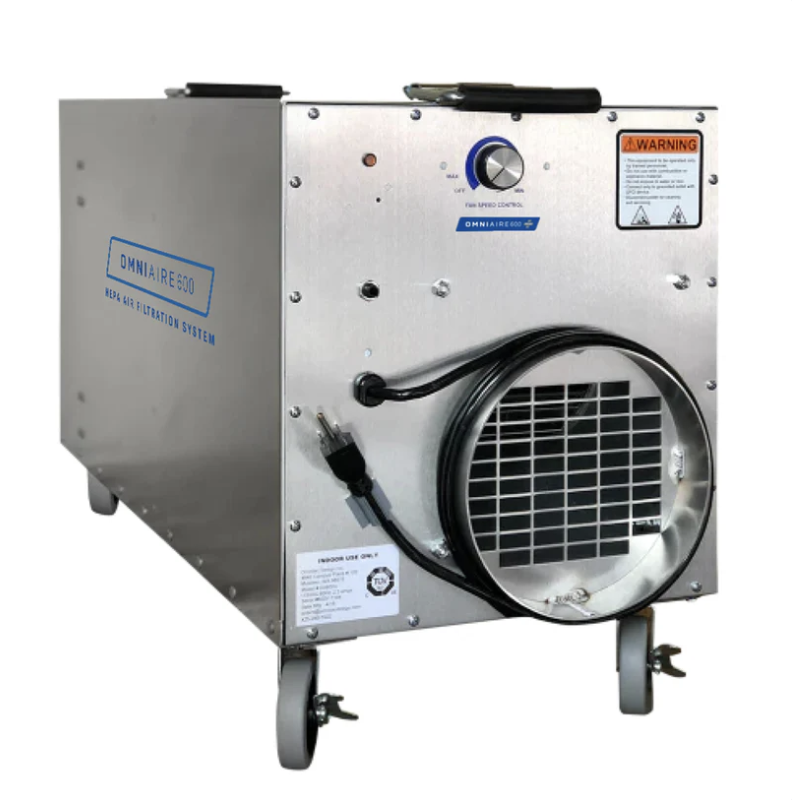Posted by Spycor LLC on Jun 26th 2025

Mold abatement projects demand precision, safety, and the right equipment to ensure clean air and regulatory compliance. A negative air machine is essential for creating containment areas, preventing mold spores from spreading, and protecting workers and occupants. With so many options available, choosing the best negative air machine for mold abatement can be challenging. In this guide, we’ll explore key factors to consider, focusing on top-performing models like the OmniAire 2200C and OmniAire OA2000CBF, and help you make an informed decision for your next project. These machines are designed to meet the rigorous demands of mold remediation, offering high-efficiency filtration and robust airflow to maintain safe working conditions. The OmniAire 2200C, with its activated carbon vapor trap filter, excels at removing odors and volatile organic compounds (VOCs) while capturing 99.97% of particles as small as 0.3 microns. Meanwhile, the OmniAire OA2000CBF provides versatile airflow options and a cost-effective bag filter module, making it adaptable for various project scales. By understanding your specific needs—such as airflow capacity, filtration type, and compliance with OSHA or CDC guidelines—you can select a machine that ensures both efficiency and safety. We’ll also discuss additional features like portability, durability, and optional accessories to enhance performance in diverse mold abatement scenarios.
Why Negative Air Machines Are Critical for Mold
Abatement

Mold remediation requires controlling airborne spores, which can pose health risks and contaminate adjacent areas. HEPA air scrubbers like negative air machines create negative pressure environments, ensuring contaminated air is filtered before being exhausted. They are vital for compliance with OSHA and EPA standards, especially in sensitive settings like healthcare facilities or homes. High CFM (cubic feet per minute) airflow, advanced filtration, and portability are key features to prioritize.
Key Features to Look for in a Negative Air Machine
When selecting a negative air machine for mold abatement, consider these critical factors:
-
HEPA Filtration Efficiency
A 99.97% HEPA filter (0.3 microns) is non-negotiable for capturing mold spores. The OmniAire 2200C comes standard with a 12” deep HEPA filter, ideal for large-scale abatement. The OmniAire OA2000CBF offers optional HEPA filters, providing flexibility for projects with varying needs. -
Airflow Capacity (CFM)
High CFM ensures effective air turnover. The OmniAire 2200C delivers 1000-2000 CFM, perfect for larger spaces, while the OA2000CBF offers 400-1600 CFM, suitable for smaller or medium-sized projects. Choose based on your project’s square footage and containment size. -
Odor and VOC Control
Mold projects often involve musty odors or chemical fumes from cleaning agents. The 2200C includes an activated carbon vapor trap filter, making it a top choice for odor removal in mold abatement. The OA2000CBF supports optional carbon filters (e.g., OdorGuard 600) for similar functionality. -
Portability and Durability
Portability is crucial for moving equipment between job sites. The OA2000CBF, at 110 lbs with aircraft-grade aluminum housing, is lighter and easier to sanitize than the 145-lb 2200C with its galvanized steel body. Both are built for rugged construction environments. -
Compliance and Safety
Ensure the machine meets OSHA, UL, and CSA/IEC standards. Both OmniAire models are compliant, with silicone-sealed seams to prevent contaminated air leaks, ensuring worker safety and regulatory adherence.
Comparing the OmniAire 2200C and OA2000CBF
When selecting the best negative air machine for mold abatement, comparing top models like the OmniAire 2200C and OmniAire OA2000CBF is crucial to ensure you meet project-specific needs while maintaining clean air and regulatory compliance. Both machines are designed for mold remediation, asbestos abatement, and dust control, but they cater to different scenarios due to their unique features, filtration systems, and airflow capacities. Below, we’ll dive into a detailed comparison of these two negative air machines, highlighting their strengths, applications, and key specifications to help you choose the ideal mold remediation equipment for your project.
OmniAire 2200C: Best for Large-Scale Mold Abatement
and Odor Control

The OmniAire 2200C is a powerhouse designed for heavy-duty mold abatement and industrial applications where high airflow and advanced filtration are critical. With an adjustable airflow range of 1000-2000 CFM, this negative air machine ensures efficient air circulation in large containment areas, making it ideal for sizable mold remediation projects, such as those in commercial buildings or industrial facilities. Its standout feature is the standard 12” deep activated carbon vapor trap filter, which excels at neutralizing odors, volatile organic compounds (VOCs), and chemical fumes often encountered during mold removal or fire and flood restoration. This filter complements the machine’s 99.97% efficient HEPA filter, which captures microscopic mold spores and other particles as small as 0.3 microns, ensuring compliance with stringent OSHA, CDC, and EPA guidelines for mold remediation equipment.
Key Strengths:
- High airflow (1000-2000 CFM) for large-scale projects.
- Standard activated carbon filter for superior odor control and VOC removal.
- OSHA, UL, and CSA/IEC compliant for safety and regulatory adherence.
- Ideal for industrial mold remediation, asbestos abatement, and restoration projects.
Best Applications: Large commercial or industrial mold removal projects, fire/flood restoration, or environments with significant odor and chemical concerns.
OmniAire OA2000CBF: Versatile and Budget-Conscious
for Diverse Projects

The OmniAire OA2000CBF is a highly adaptable negative air machine tailored for professionals who need flexibility and cost-efficiency in mold abatement, dust control, and other remediation tasks. With a variable airflow range of 340-1600 CFM, this machine can handle both small and medium-sized projects, making it suitable for residential, healthcare, or light commercial settings. Its primary filtration system features a MERV-14 bag filter module, which provides economical dust control for construction or renovation sites where silica dust or coarse particles are a concern. For mold remediation, the bag filter can be swapped for an optional 99.97% or 99.99% HEPA filter, ensuring capture of mold spores and fine particulates, making it a versatile choice for negative air machine for mold removal needs.
Key Strengths:
- Variable airflow (340-1600 CFM) for small to medium projects.
- Cost-effective MERV-14 bag filter with optional HEPA for mold abatement.
- Lightweight and portable for healthcare, restoration, and residential jobs.
- Modular design with optional accessories for enhanced mold remediation and odor control.
Best Applications: Residential or small commercial mold removal, healthcare facilities, light construction, and water/fire damage restoration.
FAQs About Negative Air Machines for Mold Abatement
Q: What is the best negative air machine for mold abatement?
A: The OmniAire 2200C excels for large projects with odor concerns, while the OA2000CBF is versatile for smaller sites with optional HEPA filters.
Q: Why is HEPA filtration important for mold remediation?
A: HEPA filters (99.97% at 0.3 microns) capture tiny mold spores, preventing their spread and ensuring clean air in containment areas.
Q: Can these machines handle odors in mold projects?
A: Yes, the 2200C’s activated carbon filter removes odors and VOCs, while the OA2000CBF supports optional carbon filters for similar results.
Q: Are these machines OSHA-compliant?
A: Both the 2200C and OA2000CBF meet OSHA, UL, and CSA/IEC standards, ensuring safety and compliance.
Choosing the right negative air machine for mold abatement depends on your project’s size, odor control needs, and budget. The OmniAire 2200C is perfect for large-scale, odor-intensive projects, while the OA2000CBF offers flexibility and portability for diverse applications. Prioritize HEPA filtration, adequate CFM, and compliance to ensure a safe, effective mold remediation process.
CLICK HERE to choose the best negative air machine for your mold abatement project!



